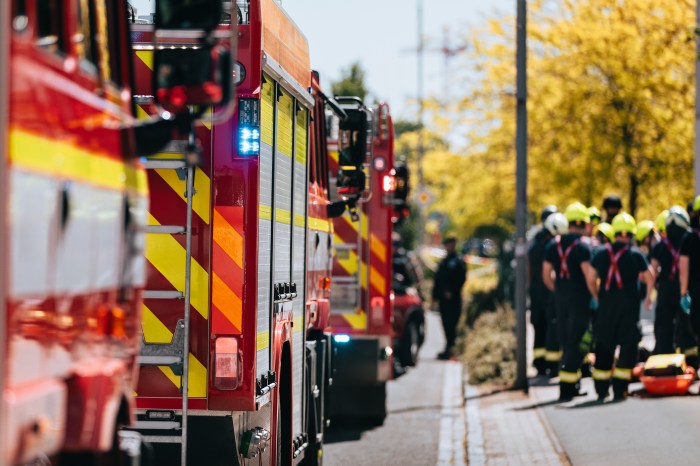The White House Thursday made two major admissions regarding its uber-secret drone program: That separate operations in January killed three Americans—one of whom was an al Qaeda hostage—and that one of the strikes targeted a compound, not a specific individual, further raising questions about the supposed high standards required before ordering a strike, a detail President Obama boasted about in a speech two years ago.
Speaking at the White House, Obama took full responsibility for the fatal strike, which killed Maryland-native Dr. Warren Weinstein and Italian Giovanni Lo Porto, both abducted in Pakistan while on humanitarian missions in 2011 and 2012, respectively.
He expressed his condolences to both families and professed regret. He ordered the strike declassified, in part, because the US is “committed to openness in good times and in bad,” he said. And he ordered a review of the tragic strike.
The White House’s acknowledgment that the US killed an innocent American and two others alleged to have joined al Qaeda was remarkable moment in the US’ Drone War. The drone program has been shrouded in secrecy for years and it wasn’t until a federal court ordered that a legal justification for a particular strike be released did the Obama administration finally admit the CIA’s role in the program. But Americans—if they actually begin to pay more attention to the government’s targeted killing program—shouldn’t mistake this one instance of “openness” as the administration embarking on a far more transparent approach with regard to the controversial program, the legality of which continues to be questioned. Given the administration’s history, it’s unlikely, unless another American hostage is killed by friendly fire, that Obama will make public statements regarding combat operations involving Americans supporting al Qaeda or civilians for that matter.
It took the Obama administration nearly four years to publicly admit—in a letter to Congress, not a public statement—that four Americans had been killed as part of the government’s targeted killing program. Only one of them was actually targeted. That was in May 22, 2013, when U.S. Attorney General Eric Holder, in a letter to Congress, finally acknowledged the deadly operations.
One such operation was in Yemen in 2011, which killed al Qaeda in the Arabian Peninsula leader Anwar Al-Awlaki, who was born in New Mexico. Also executed in that strike was ex-Long Islander Samir Khan, who moved to Yemen from North Carolina and became the editor of the al Qaeda propaganda magazine Inspire. Khan was considered a “bystander.” Two weeks later, a drone strike targeting another man killed Al-Awlaki’s 16-year-old son, also an American. Also added to the list of US citizens taken out via a unmanned aircraft was Jude Kenan Mohammed.
Now, three additional Americans have been included to that list: Weinstein and Ahmed Farouq, both of whom were killed in the January strike on the al Qaeda compound at the Afghan-Pakistan border, and Adam Gadahn—taken out in a separate strike the same month. The two suspected Americans-turned-terrorists were not targeted—just as in the case of Khan.
Despite hundreds of hours of surveillance and intelligence the government obtained prior to the January al Qaeda compound strike, it appears the government still wasn’t certain whom it was actually targeting.
In a May 2013 speech at the National Defense University in Washington D.C. Obama suggested that deep vetting occurs before a strike is approved.
“Before any strike is taken, there must be near-certainty that no civilians will be killed or injured—the highest standard we can set,” he said.
Was there near-certainty in this case?
“These new disclosures raise troubling questions about the reliability of the intelligence that the government is using to justify drone strikes,” said Jameel Jaffer, deputy legal director at the American Civil Liberties Union, in a statement. “In each of the operations acknowledged today, the U.S. quite literally didn’t know who it was killing. These and other recent strikes in which civilians were killed make clear that there is a significant gap between the relatively stringent standards the government says it’s using and the standards that are actually being used.
“It would of course be easier to assess this gap if the government routinely released information about individual drone strikes,” he continued. “Unfortunately, the president’s stated commitment to transparency can’t be squared with the secrecy that still shrouds virtually every aspect of the government’s drone program.”
The US cites the 2001 Authorization to Use Military Force Act to justify its drone war, which largely takes place in undeclared war zones, such as Pakistan, Yemen, and Somalia. According to the Bureau of Investigative Journalism, which tracks such strikes the best it can, between 2004 and this year there’s been an estimated 415 strikes in Pakistan, killing between 2,449 and 3,949 people. Of those killed, 423 to 962 of them have been civilians, including 172 to 207 children, according to BIG. And that’s just in Pakistan. BIG also endeavors to track strikes in Yemen, Somalia and Afghanistan.
The one time the government purposely targeted a US citizen—Anwar Al-Awlaki—it did so after intelligence officials deemed him a “continued” and “imminent” threat to America. The so-called “drone memo,” which was written July 16, 2010, but not released until a court ordered the government to do so last year, green-lighted any operation targeting Al-Awlaki.
“We do not believe [Al-Awlaki’s] citizenship provides a basis for concluding that he is immune from a use of force abroad that the AUMF otherwise authorizes,” the memo’s author states. Thus, killing Al-Awlaki was considered constitutional.
A redacted version of the memo only became public when the US Court of Appeals for the Second Circuit ordered the government to do so after two separate Freedom of Information lawsuits were filed by two reporters for The New York Times and by the American Civil Liberties Union.
Slowly, more information is coming out about the drone program—including the heartbreaking details of Weinstein’s capture and death. Yet the government is mum when it comes to reports of hundreds of civilian casualties. Given the secrecy surrounding targeted killings, it’s unclear if Americans will ever understand the full scope of the clandestine program.































